Little Inklings: How to Become a Better Illustrator

A few quick tips on becoming a better illustrator
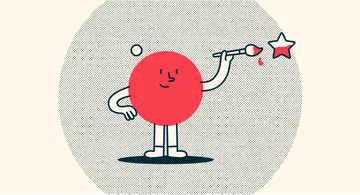
This is an Inkling. They’re great at visually portraying simple advice on specific subjects, but they aren’t the most articulate in their explanations. But, luckily, as I’ve grown in my career as a designer, I’ve picked up a few of these Inklings here and there and will do my best to share their knowledge.
A word of advice before we move forward – we all work differently, and that's great! Hopefully, these tips can help you streamline some of your process. So whether you are a professional or somewhat of a novice, here are a few pointers to keep in mind as you venture into your next illustration.
1. Learn from the best
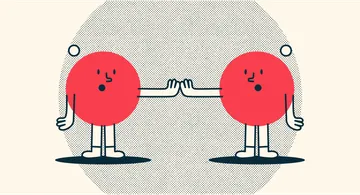
Oftentimes as an illustrator, you come across people whose work you idolize. (This applies to any profession, really.) You see their work and you think ‘Holy smokes! That’s fantastic… I could never.’
But in actuality, you can! Appreciating someone else’s work shouldn’t be the end of your learning experience. Finding inspiration from an illustrator's work or even mimicking an illustration as a training method are both great ways to hone your skill.
So eventually, when you stumble across something you admire, take a photo of it or save a screenshot to your desktop – the next time you feel those creative juices flowing or that hunger to be a better illustrator, take a gander at your inspiration collection and start making some meaningful progress.
2. Find your flow
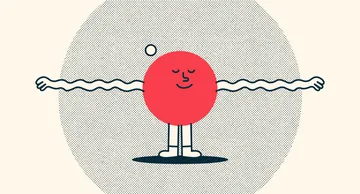
Starting an illustration can seem daunting at first, but overthinking only leads to more complications. Keeping a quiet, calm mind is key to unlocking your process and finding out what feels most natural to you.
Perhaps you’re a doodler! Many people use sketching during the ideation phase. Getting all the bad ideas out on paper is an easy way to free up your mind, and with every sketchbook page turned, you’re left with a more refined concept that you can then dump into the computer to then finalize.
Or maybe you’re the type who likes to jump into your preferred illustration program and rely on the almighty ‘Command-Z.’ The ability to take a draft and push it off the canvas or undo it entirely is great for perfectionists who want their first design to be their final design. It's also great for capturing iteration as your illustration matures.
These are just a few options, so make sure to take the time to slow down and find what process works best for you. Over time, you’ll discover that your flow will get a lot smoother.
3. Push your boundaries
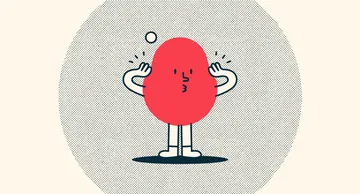
Now of course life is all about balance and that’s also true for the world of illustration. Just because quieting your mind is a good way to uncover your process doesn’t mean you get to stay in your happy place forever.
As an illustrator, it’s important to remain cognizant of your go-to trappings and seek out styles that seem unusual or scary. For instance, you can try experimenting with texture or find a way to create something hyper-detailed if simplicity is your established style. There are a ton of opportunities to shake up your routine, and in the end, seeing how flexible of an illustrator you really are is a great confidence boost.
So as you start your next project, make sure to extend outside of your creative wheelhouse, as this helps to promote growth all the while proving to be a great motivator for learning new things.
4. Think outside your own head
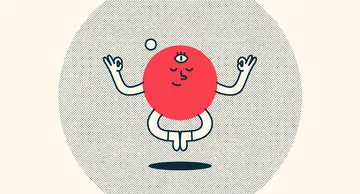
Our instincts as illustrators are important and can lead to some very surprising results. But your gut doesn’t always tell the whole story, and listening to it can lead us to underestimate (or overestimate!) ourselves. Fortunately, there are lots of options for getting feedback outside of your inner critic.
One way to combat isolating thoughts of self-doubt is to join a group of fellow illustrators online. You’ll find that engaging in a forum is a really great way to improve your work. Perhaps you have a particular illustration that doesn't quite capture it's intended meaning. The back and forth from online communities can help!
Another way to find support is to reach out to your friends or colleagues within the design community. Not only does this offer a form of camaraderie, but gathering feedback from another perspective can be a great approach to opening your mind, and ultimately, your illustrations.
5. Identify your limit
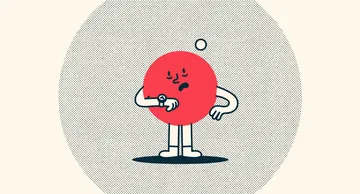
We all know the feeling: You’re feeling pressured by a deadline. And whether it’s of your own making or not, this time frame creates a vacuum in your mind that cripples your creativity. Well, fear not. The answers you seek will come to you, but for now, it’s important to recognize that you've reached peak burnout.
When these signs of exhaustion arise, make sure to take them seriously and not ignore them. Something as simple as a quick walk or setting a predetermined boundary can be an effective way to respect the well-being of your mind.
